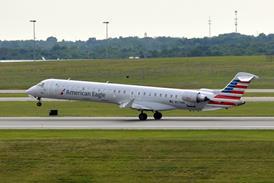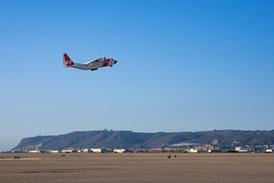Julian Moxon/PARIS Guy Norris/LOS ANGELES
Dassault Aviation has launched an extended range version of its Falcon 2000 business jet, the 2000EX.
Powered by the 7,000lb-thrust (31.1kN) Pratt &Whitney PW308C, the 2000EX will have a 25% increase in range, to 7,030km (3,800nm) at Mach 0.8 and will be capable of non-stop flights between Europe and the US east coast.
The 2000EX has 31% more fuel capacity. The higher operating weights also required a strengthened landing gear and braking system. The aircraft will "eventually" be offered with the new "EASy" interactive cockpit. The 2000EX is due to be revealed at the National Business Aviation Association show in New Orleans which starts on 10 October.
The PW308C has 40% higher thermodynamic thrust than the original PW308, which powers the Hawker Horizon, thanks to a wider diameter fan and a higher flow compressor and combustor. The Honeywell AS900 was also considered by Dassault.
First flight is set for the end of 2001, certification in the third quarter of 2002 and deliveries in early 2003. The 2000EX is not aimed at replacing the original Falcon, which has been the bestseller in the Dassault business jet range. The Honeywell/General Electric CFE738 engine continues to be used on other versions.
In a second major development involving the French company to be unveiled at NBAA, Honeywell is showing a new interactive cockpit aimed at reducing pilot workload and improving situational awareness. It will eventually be incorporated into the entire Falcon business aircraft range.
Based on the original hardware from Honeywell's Primus Epic system, the EASy cockpit features a completely new "intuitive" man-machine interface in which all functions can be carried out with pull-down and pop-up menus using a trackball-like cursor control device (CCD) at the back of the control pedestal. Fingertip controls and a multi-function knob for display switching and menu selection are also provided.
Dassault says the CCD lets pilots control functions faster and more accurately without diverting the eyes from the instrument panel, "providing more head-up time and a safer cockpit".
Source: Flight International























